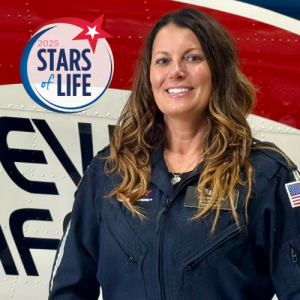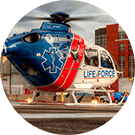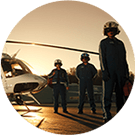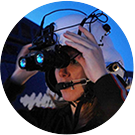Jason Swihart’s family was among the first to sign up for the AirMed Care Network (AMCN), with Air Evac Lifeteam as the air ambulance provider, when the membership initially was offered in Weatherford, OK. To him, it wasn’t a hard decision. As a first responder himself—once a firefighter, now in law enforcement and still a tactical medic—he had seen, first-hand, too many instances of lives and limbs lost because higher levels of medical care were out of reach via ground ambulances.
Weatherford is a small, vibrant town located in southwest Oklahoma. It’s fast growing, but lacks easy access to a Level One trauma facility. Level One is a designation given to a facility that is capable of providing definitive care for every aspect of injury and illness, including emergency medicine, neurosurgery, internal medicine, orthopedic surgery, pediatric and critical care. They are exclusively located in large urban centers.
Proven, Valuable Benefits
In his role as a first responder for the local fire department, Swihart didn’t have to wait long to see the benefits of the rapid response of air medical. A couple of months after the service was available in his area, he was called to the scene of an accident in one of the remote canyons that define the landscape in his part of the state.
An ATV four-wheeler had flipped, critically injuring the rider. Swihart saw the rider had a flail chest, a condition where several ribs have multiple breaks and the chest wall is destabilized. It is associated with considerable morbidity and mortality. Knowing the patient’s life was on the line and seconds mattered, he called in Air Evac.
Swihart had recently been trained in setting up a proper landing zone. He designated a flat area that was large enough, flat enough and cleared of debris and hazards. He kept his eyes on the skies for the first signs of the helicopter. The helicopter’s rotors stirred the dusty ground and bent the native forage grass as it touched down minutes later.
Swihart watched as the patient was carefully loaded into the medically configured aircraft. The injured man was treated in-route by the Air Evac medical crew and delivered quickly to a hospital that could further treat his injuries.
It was an object lesson in how important air ambulance is to rural, remote areas. And Swihart has always been a quick study of medical necessity, procedure and care. He had gotten his AMCN membership for just that reason: Just in case the unthinkable happened. Which unfortunately it would. This time to Swihart himself.
The First Responder Becomes the Patient
It was August 2019. The temperature was a scorching 114 degrees—high even for those used to the long, dry Oklahoma summers. Swihart had previously suffered a stroke and was still recovering. Now, again, the symptoms were returning—vomiting, dizziness and excruciating pain like an explosion inside his head. He knew he had minutes to initiate care.
His wife, Tiffany, sped him to the local ER. She had never driven so fast. Doctors there determined that his intracranial pressure had increased to a dangerous level. It was clear that he would need the care of a Level One Facility. Swihart had suffered a hemorrhagic stroke: a ruptured blood vessel in the brain. Time was of the essence if his life was to be saved. The first call was to the neuro team at UT Southwestern Hospital in Dallas to prep for his arrival. The second to Air Evac.
No ground ambulance could have gotten him to north Texas in time. Air Evac had him to UT Southwestern in a mere two hours, nearly a third of the time by ground. Stabilized during the flight by a nurse/paramedic team trained in critical care, Swihart was quickly taken into surgery upon arrival.
His scars eloquently tell the story of his survival. His neurosurgeons installed a cranial shunt in the temporal area near his right eye. This procedure allows blood and fluid to drain, relieving pressure on the brain. But there were after effects. He had to relearn how to walk. Through hard work and excellent physical therapy he accomplished that in short order. He was back on the job in a relatively short 70 days. All because he received the right level of care when he needed it—at a moment’s notice.
Hear more about Jason’s story in his own words below,

A flight nurse’s courage: How one hero stepped up when it mattered most
Across the country, emergency medical professionals are trained to respond at a moment’s notice®. But sometimes circumstances make a difficult situation even more challenging —

Common Hiking Injuries: Prevention and First Aid
Hiking is a favorite American pastime. From sandy beachside dunes, higher elevation climbs or peaceful forests, you’ll find hikers on the trail year-round. For experienced

Rural Communities and Limited Access to Healthcare
When Time is a Factor Imagine you’re a rancher in South Dakota or another state where hospitals are often a great distance from small towns







